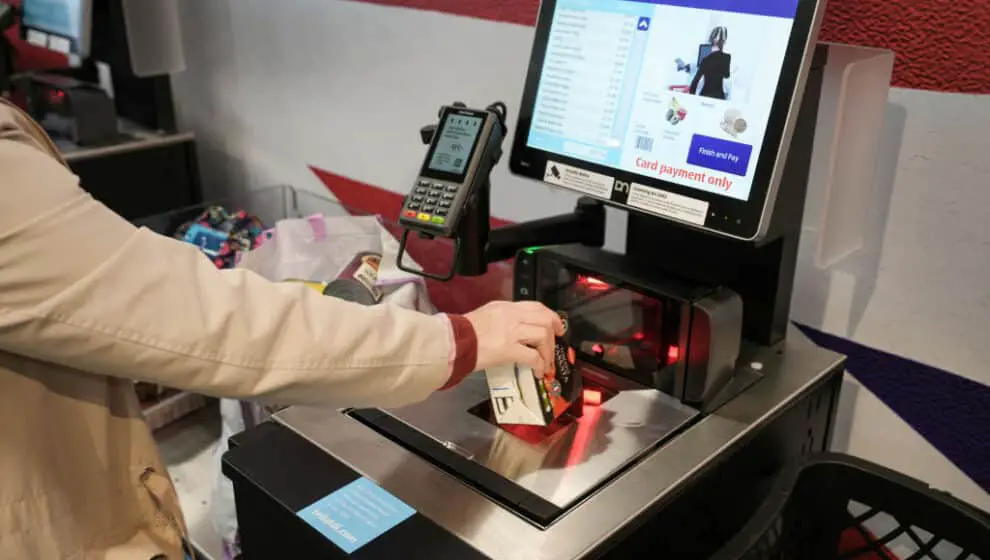Supermarket self-checkout, long considered a threat to the human workforce, is currently solving labor shortage issues.
Key Details
- Grocery store self-checkout lanes have been around for a while and despite customer frustrations, it doesn’t look like they are going anywhere anytime soon.
- Most grocery stores installed self-checkout machines during the pandemic due to major staffing shortages and customers wanting to limit human contact.
- Mega grocery chains like Walmart, Kroger, and Dollar General have been testing stores with only self-checkout lanes to help shoppers have a fast and easy experience.
- Many customers aren’t fans of the automated checkout lanes, but despite their frustrations, stores continue to install the tech.
- Amazon is ahead of the game when it come to self-checkout. The company has a goal in its stores to change the shopping experience for customers by making it faster and easier to pay.
Why it’s news
Self-checkout is nearly twice as widespread as it was before the pandemic, representing 30% of all grocery store transactions in 2021, according to an FMI-The Food Industry Association report. That is up from 18% in 2018.
The machines are now at 96% of the 38,000 retail stores (across 96 companies) the group surveyed, according to The Wall Street Journal.
Customers have voiced concerns about the automated machines, but due to continued labor shortages and high employee turnover rates, experts think companies will have no choice but to continue installing the technology. The turnover rate for grocery store employees in 2021 was at 48%, down slightly from a record high in 2020, according to FMI.
“We don’t see the labor crisis coming to an end anytime soon,” says Mark Baum, who oversees industry relations for FMI.
Baum says that self-checkout machines, which cost anywhere from $14,000 to $40,000 to install, pay for themselves quickly. Stores usually only have one or two workers for every five to 10 machines, instead of one cashier per lane, according to The Wall Street Journal.
Although self-checkout is dominating grocery stores, many customers wish it would go back to traditional grocery check-out.
Two-thirds of shoppers say they have experienced a failure at a self-checkout lane, according to a 2021 survey of 1,000 people by technology company Raydiant.
Backing up a bit
Many grocery stores are installing the traditional self-checkout technology where customers swipe goods and check-out like a typical register, but some stores have been stepping it up a bit more.
Last month, Amazon announced that it was expanding its Amazon One palm-scanning technology to 65 Whole Food stores in California. The checkout devices were first introduced in 2020 as part of the Amazon One payment service, allowing customers to pay with a scan of their palm.
Before the Amazon One stores the company had introduced its Just Walk Out Stores, where customers can just walk out without even stopping to pay with innovative sensor technology.
